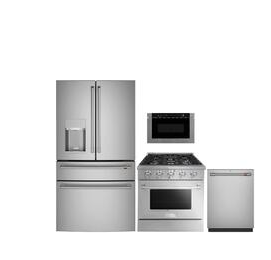Gas or induction, which is better for your kitchen?

It is an eternal debate and almost as polarized as the color of the political pamphlet. Gas or induction? The followers of each kitchen defend its advantages at all costs. The truth is that, in the end, they all have their pros and cons, which will weigh more or less depending on the priorities of each one.
After the transition from gas cookers to glass-ceramic cookers, the industry is now very clearly committed to investing in innovations and improvements for induction cookers while assuring that these –perhaps also due to the commercial impulse– are the ones that are currently being bought the most.
Advantages of induction

They are very clear compared to their predecessors, the ceramic hobs: the container preheats twice as fast, and they have a power option for ultra-fast heating. That is why – their manufacturers assure – that up to 30% more energy is saved; considering them, in the long run, the most economical and sustainable electrical option.
In addition, the plate itself does not get hot, so they are safer and easier to clean, since food that falls on the heat source does not stick. What the ceramic hob brings in its favor is that you can finish cooking with the residual heat and, above all, that it accepts all kinds of pots and pans, from iron to clay.
Induction cookers are safer and easier to clean
Induction vs. Gas

Now yes, the differences are not so clear when it comes to comparing induction with gas stoves. By not admitting pots that do not have a base of ferromagnetic material, leaning towards induction usually means changing the kitchen battery of the home, to which we must also add the cost of installing the plate.
A significant initial outlay

In gas, you can cook with any pot, and it is just as fast when it comes to transmitting heat. If we spin fine, it also allows more options at the culinary level. As the induction hob does not activate if there is no contact with the base, cooking such as sautéing or stewing over high heat is not possible. Surely this is one of the reasons why many restaurants cook with gas.
At a culinary level, gas allows more options, such as sautéed or stews over high heat

This and, of course, energy savings: the gas stove will always be cheaper than any electric option. The main drawback is maintenance. It's messy to clean, and if not done right, it gets greasy quickly. It also has an added risk that does not exist with induction cookers, some of which even include a programmable timer.










